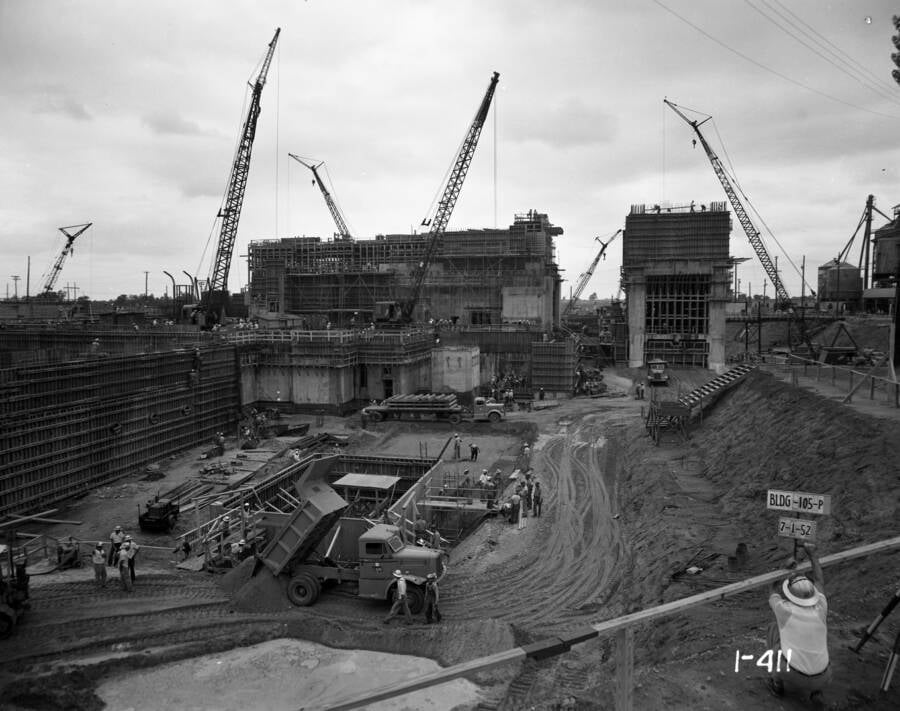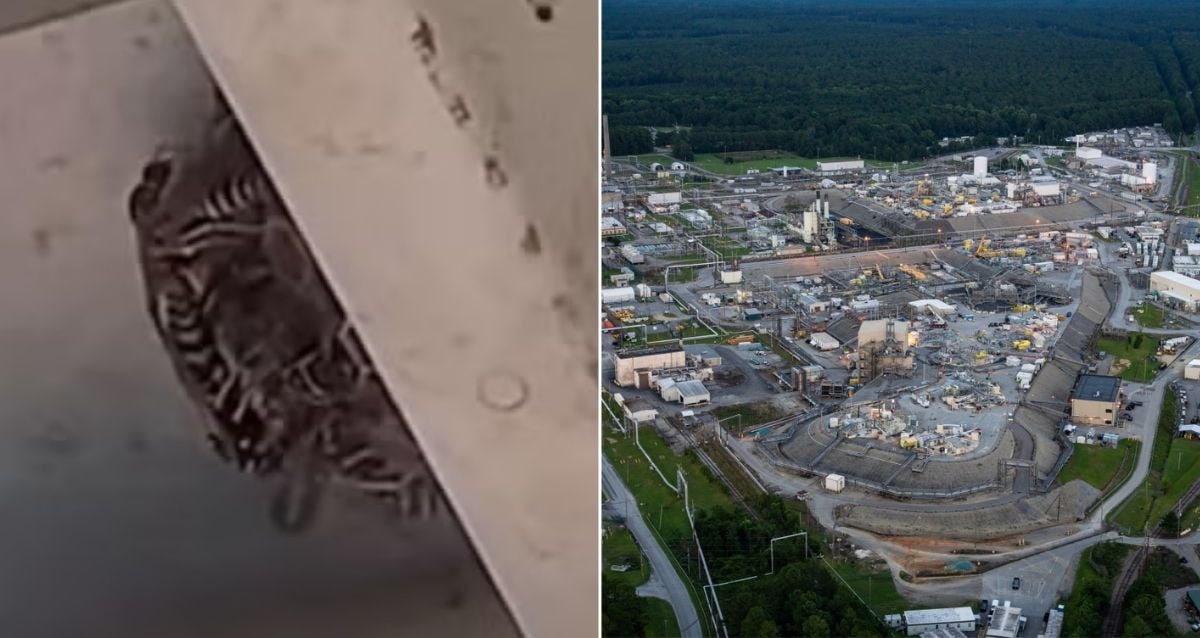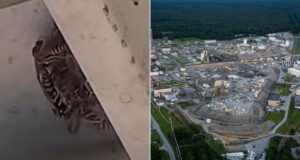Mystery Unfolds as Workers Discover Four Radioactive Wasp Nests Hidden Within South Carolina Nuclear Site
The nest was sprayed, removed, and disposed of as radiological waste. According to the report, “The ground and surrounded area did not have any contamination.”
The nest was found on a post near Tank 17 in the F-Area Tank Farm location of the site, which used to produce materials for nuclear weapons. Originally opened in the 1950s, Savannah River Site (then called the Savannah River Plant) spent decades making plutonium and tritium, a component of hydrogen bombs.

Public DomainThe construction of nuclear reactors at Savannah River Site in the 1950s.
The plant stopped production after the fall of the Soviet Union, and the Department of Energy began cleaning up the site in 1996. However, this won’t be complete until 2065.
What’s more, the site may soon see the production of nuclear materials once again. In 2018, the Trump administration released plans to make nuclear weapon cores known as plutonium “pits” at the facility, with the project set to begin in the 2030s.
In the weeks since the discovery of the first radioactive wasp nest, three more have been discovered. Timothy Mousseau, a biologist at the University of South Carolina, told The New York Times, “This is an indicator that there are contaminants spread across this area that have not been completely encased and protected.”
Concerns About Contamination At Savannah River Site
The Department of Energy report on the initial wasp nest discovery stated that the contamination of the nest did not occur because of a leak in the waste tanks but instead from “on-site legacy radioactive contamination.” However, the document did not specify the species of wasp or which radioactive isotopes were found.













Post Comment